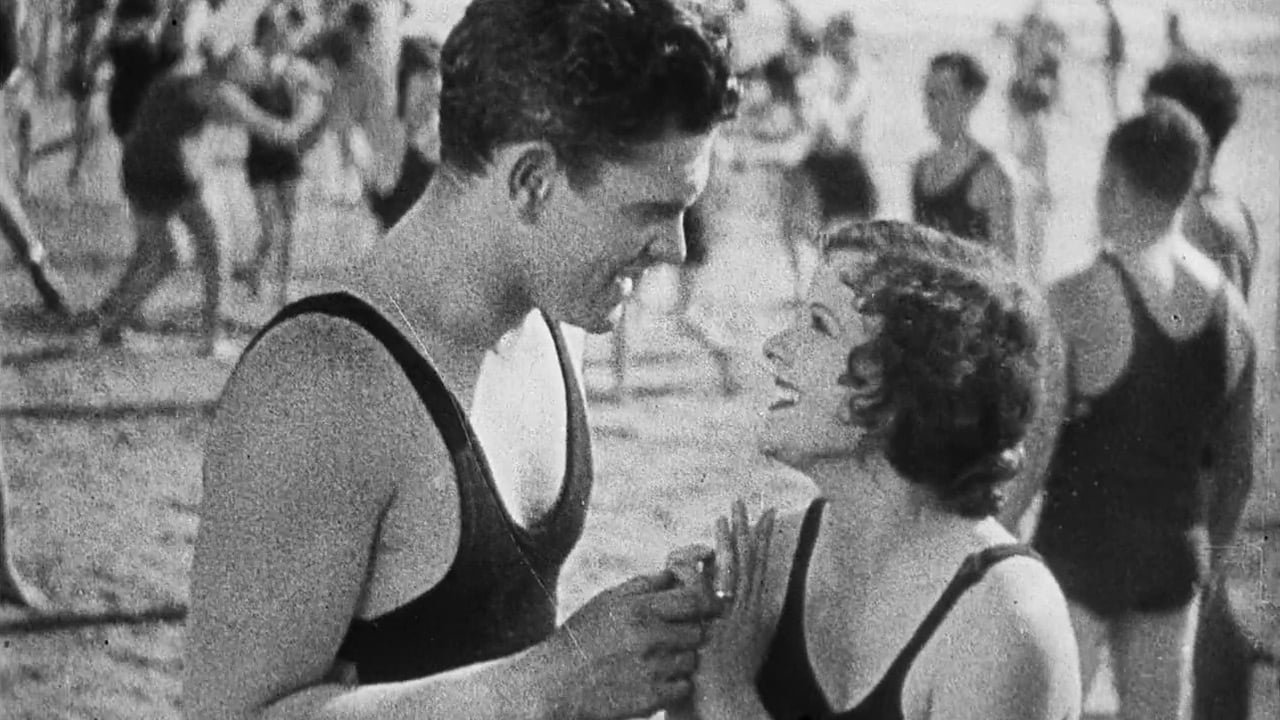

Best movie of this year hands down!
... View MoreA Major Disappointment
... View MoreI am only giving this movie a 1 for the great cast, though I can't imagine what any of them were thinking. This movie was horrible
... View MoreOne of the film's great tricks is that, for a time, you think it will go down a rabbit hole of unrealistic glorification.
... View More... and I could say the same thing about Fejos' "Broadway", made a year later. Fejos recounts the tale of two lonely New Yorkers, Jim (Glen Tryon) and Mary (Barbara Kent), who find love and each other during a half day holiday at the beach and Coney Island. You first see the workday from Jim and Mary's perspective as they are ruled first by the tyranny of the alarm clock and then the tedium of the workday as you see a clock overlaying the image of each at work. Jim is a low-level machine operator, and Mary is a telephone operator. Then there are "the crowds". Jim and Mary are crowded at breakfast, at a diner filled with patrons, crowded on the subway, crowded at work, and crowded at the beach and amusement park. Yet both of them are completely alone in the world, which, especially in the attractive Miss Kent's case, seems somewhat inconceivable.This late era silent has a dearth of title cards, which does not subtract from the film's enjoyment. In fact, what does subtract just a little are the short dialogue scenes that just don't make sense. One scene is Jim and Mary on the beach suddenly in the dark AND in color, with the crowd removed. Nothing they say shines any light on their situation or feelings at all. Another one is in a courtroom where Jim has been detained for being unruly. He gives a speech like a Bolshevik basically shaming the judge and ... the judge lets him go???? This social awareness seems very strange stuff coming from Jim who, up to that point, has seemed to be a very uncomplicated fellow. Very strange, but typical of talking scenes inserted into silent films at the dawn of sound.What is extra special about this film is to see the lives of working class people in 1928. Notice that the workday that Jim and Mary are going through is a Saturday, and this was the norm back then and until some time after WWII. People would normally work half a day on Saturday and have only Sunday in its entirety as a day off. Catch this film if you can, even if you are not a huge silent film buff.
... View MoreIt's a shame Lonesome hasn't been seen more widely by modern audiences. The limited acclaim it's received is well deserved. Lonesome is very simple. It's no more than a little romantic movie of two people who fall in love and then appear to lose each other. But the whole thing is told expertly well. The camera moves about freely in many unique and interesting ways. Visually alone, it's quite the spectacle. It also helps that the two in the lead roles are enjoyable.Glenn Tyron is good enough in his lead role, but his romantic interest, played by Barbara Kent, is the real star. She is fun and playful when needed, but her soulful eyes convey more pain then most people ever could with their voices. Her charisma is evident from shot one. The only downside to the film is the inclusion of a few sound scenes. Clearly done just to cash in on the new craze, it actually only serves to grind the story to a halt. It forces the movie to become stationary, and the dialogue itself is pretty inane.I cannot recommend the film strongly enough, though. It's as enjoyable of a romance as you'll ever see. There's nothing too complicated here: just two people falling in love, and it's a joy to see.
... View MoreA young man and a young woman lead nearly identical lives throughout the day, he a punch-press operator and she a telephone operator. After work, both decide to go to Coney Island, where they meet, have fun, fall in love, and then lose each other. The movie's cute, but it isn't anything superb. There were two much better films made in the same year that Lonesome reminds me of. First, King Vidor's The Crowd, one of the best films of the period. That one takes place over quite a lot more time, but the styles are similar, with The Crowd being much more sophisticated in its narrative, characterization, etc. The Coney Island scenes are probably the most celebrated part of Lonesome, but these are nothing compared to those in the Harold Lloyd vehicle Speedy. Fejös exaggerates these scenes beyond belief, with so much confetti falling on the Coney Island patrons that one would think the crowd would drown in paper. This film is from the school of silent filmmaking where putting a lot of people on screen at the same time is considered ingenious. In comparison, the crowds of Speedy are believable, and that sequence is absolutely lovely. Lonesome also suffers from three intrusive sound sequences, which Universal forced in at the last minute. They stop the film dead in its tracks (but they are somewhat funny). Overall, the film is entertaining, if not too memorable. One particular sequence stands out as masterful: the man's and woman's workdays, edited back to back, with the whole screen surrounded by the numbers on a clock, translucent hands following the time. 7/10.
... View MoreIf only this remarkable movie hadn't had the misfortune to be released just when the enthusiasm for sound was sweeping all before it, it would probably have been more appreciated at the time and remembered today as one of the all-time classics. As an expression of the isolation of city life, it builds up an atmosphere of desperation, in spite of its romance with a happy ending. The scene where the boy searches frantically for the girl throughout crowded Coney Island, buffeted this way and that by the uncaring throngs, turned away by the indifferent faces of the amusement park workers, has few equals for anguish. Also unforgettable is the montage that cuts from one to the other of the lovers (who have not yet met) while they are at work, the one at a factory, the other at a telephone switchboard; the motions of the hands and the machines build to a frantic, overwhelming pace.Unfortunately, before the movie was released it was sadly mangled by the insertion of several sound sequences, which stop the continuity dead with their absolute stasis, and feature dialogue so thunderously inane you have to suspect it was written by the sound technician. Nonetheless, "Lonesome" remains one of the most sophisticated examples of the silent movie, an art form that was killed by sound almost as soon as it had reached maturity.
... View More